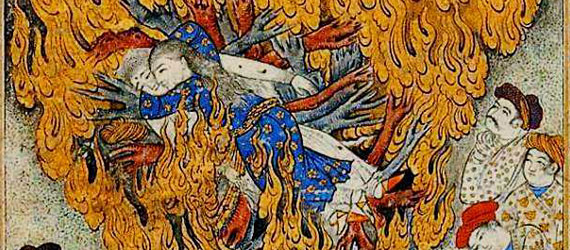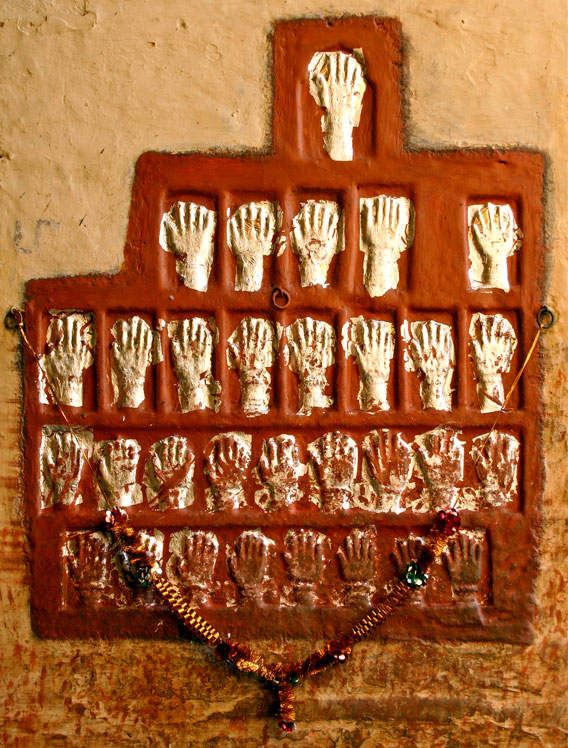Day 17: A Burning Love: The Golden Handprints of Dead Queens
31 Days of Halloween: On Atlas Obscura this month, every day is Halloween. Stop by the blog every day this month for true tales of the unquiet dead. Come for the severed heads, stay for the book bound in human skin. Every story is true, and each one is a real place you can visit. We dare you.

As the fifteen wives of the Maharaja left home for the last time, they left impressions of their hands that would endure after they gave their lives on the funeral pyre.
In Jules Verne’s Around the World in 8o Days the intrepid hero, Phineas Fogg, rescues a young woman from this fiery death. In the 1890s Kipling’s penned a romantic and disturbing poem called “The Last Suttee” describing the desperate (and ultimately successful) attempts of a widowed queen to burn with her king’s body.
Europeans were morbidly fascinated with the northern Indian tradition of sati, or ritual self-immolation of widows following their husband’s death.
Scholars argue amongst themselves about how old the tradition truly is and whether it is a Hindu custom, per-se, or a distinctly regional custom of the North. Some say it may be 5000 years old; others just 1000. Either way: old - and, not particularly uncommon. Ritual widow suicide is not uncommon, particularly in the ancient world, particularly in the East. In many cultures, widows of soldier who died at war and queens bereft of kings have killed themselves rather than face an uncertain fate.
But when the British arrived India in the mid-1700s they quickly began exporting stories of the wonders and horrors of this exotic land, and the burning of widows became a subject of horrified awe at home and abroad.

Attempts were made to outlaw the practice as early as 1798, and again officially in 1829, but it is thought that small gilded handprints on the Iron Gate of Mehrangarh Fort date to the 1843 death of Maharaja Man Singh.
Despite these efforts, sati deaths have continued into the modern era in isolated incidents, seeking the romantic death described by Kipling:
The black log crashed above the white:
The little flames and lean,
Red as slaughter and blue as steel,
That whistled and fluttered from head to heel,
Leaped up anew, for they found their meal
On the heart of – the Boondi Queen!




Follow us on Twitter to get the latest on the world's hidden wonders.
Like us on Facebook to get the latest on the world's hidden wonders.
Follow us on Twitter Like us on Facebook